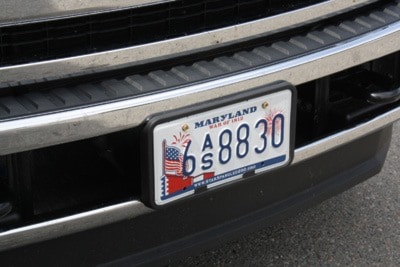Walking down Seventh Avenue in Keremeos the other day I was surprised to come across a large pickup truck bearing license plates from Maryland, U.S.A.
What caught my attention was the slogan across the top of the plate that said, “War of 1812.”
I might be mistaken, but I have always been under the impression that Americans in general had more or less selectively forgotten that conflict between British North American and the fledgling states.
After all, they lost it, didn’t they?
Curious to understand why Maryland would produce a commemmorative plate to a memory best forgotten, I looked for some information on the internet.
I was amused to come across this explanation:
“The new license plate was created and designed by Maryland’s War of 1812 Bicentennial Commission to commemorate the state’s history and unique contributions to the defense and heritage of the nation, including the pivotal clash that ensured American victory, an iconic flag, and our national anthem, The Star-Spangled Banner.”
Really? “The pivotal clash that ensured American victory...” - hmmm.
I decided to take a closer look at the later history and outcome of the war, because the statement above certainly didn’t jive with my recollection of the war.
After all, I once read both of Pierre Berton’s books on the conflict.
The Battle of Fort McHenry is the particular Maryland conflict being referred to above. It took place near the end of the war after British and Canadian forces had attacked Washington, burning the White House and sending President James Madison fleeing into the countryside.
Some historians consider the Battle of Fort McHenry as not being a battle at all.
British guns had range on American cannon, bombarding the fort without return fire. A plan to coordinate a naval invasion with a land force couldn’t be implemented, so the British called off the attack. Because all of the lights in Baltimore had been extinguished in the town during the night of the bombardment, for 25 hours the only light was given off by exploding shells over Fort McHenry, illuminating the flag that was flying over the fort. (The so called defence of the fort inspired Francis Scott Key to write a poem that eventually supplied the lyrics to The Star Spangled Banner.
Treaty negotiations between Britain and the U.S. had begun in August in Europe around the same time British and Canadian troops were routing the White House, (which was done in retaliation for the American’s earlier looting and burning of Toronto).
A few remaining battles took place before word of the peace treaty could get back to North America, including the Battle of Plattsburgh and the Battle of New Orleans, both of which were decisive American victories.
It’s important to note that these battle were fought largely by British regular forces; the Americans invasion of Canada had largely been repulsed by a combination of the British army. natives and Canadian militia.
The war had more or less become a stalemate by this time.
The Treaty of Ghent called for all occupied territory to be returned, the prewar boundary between U.S. and Canada to be restored, and allowed Americans to gain fishing rights in the Gulf of St. Lawrence.
Nothing was said at all about original American grievances; Indian raids sponsored by the British, naval impressment and naval blockades.
The British lost 1,660 men in battle with 3,679 wounded, while 3,321 died from disease. The Americans lost 2,260 to battle along with 4,505 wounded and an estimation of 15,000 Americans who died from all causes directly related to war. (These numbers do not include Canadian militia forces or deaths among native tribes.)
It’s estimated that the war cost Britain 25 million pounds; the U.S., 105 million dollars, which would have compared as similar amounts back in 1814. Finally, 3,000 American slaves escaped to British freedom as a result of the war.
Popular views in both countries see the war as a victory for themselves, where in Britain the conflict has been largely forgotten, known as a peripheral dispute that took place during the war with Napoleon. A poll taken in February of this year found that in a list of items that could be used to define the Canadian identity, the fact that Canada successfully repelled an American invasion in the War of 1812 places second behind the fact that Canada has universal health care.
Historians have differing views of the outcome of the conflict, some saying that the war ended in stalemate.
Others contend that the war constituted a British victory beause Britain had achieved her military objectives of stopping repeated American invasions of Canada and allowing Canada to remain independent of the U.S. Further, the U.S. failed to stop impressment, as that ended with the end of Britain’s war with France.
A final historical view sees the war as a victory for everyone but the Indians. The Americans won by securing her honour and by being able to resist a powerful empire for a second time (a second war of independence); the British won by not losing any territory.
However, for the Indians, the end of the war meant the end of British demands for an independent Indian state as well as the withdrawl of their support and protection in the mid west, which allowed the Americans to have “continental predominance.”
The rest, as they say, is history.
As for who won the War of 1812, it appears that it all depends on your perspective.
Oh, and finally - , the Maryland license plate that I saw on Keremeos’ main street? - an “unscientific” poll in the Washington Post found that 86 per cent of repondents were unimpressed with the plate, with just eight per cent calling it “beautiful.”
